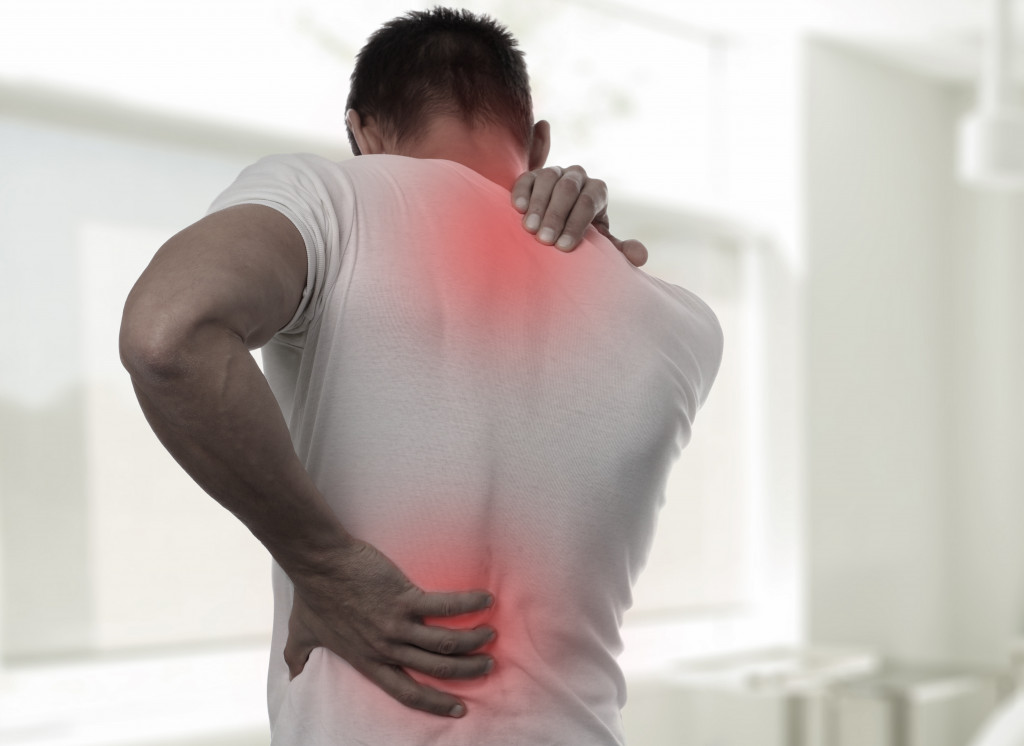If you’ve ever been in the same sitting position for hours, you might notice that there will be pressure building on your back, or you might not feel your feet from being in a stationary place for a long time. While there’s no problem in working to put food on the table, it’s also essential that we think of our overall health.
Of course, our posture and how we usually treat our body figure will affect most of what we do in the office. But no matter how well keep our backs straight or how fact we type on our keyboard, there’s going to come to the point that our body will feel fatigued. Naturally, this happens because we’re it’s not natural staying at an office and staring at a dimly-lit computer screen all day. But what might seem like a trivial matter can have real-life consequences on our health.
According to Murphy’s law: what can go wrong will go wrong. Hazards can manifest as potential dangers, so it’s only appropriate to make sure that the workplace is safe for employees. However, there’s one type of hazard that most people don’t know about: ergonomic hazards.
What Is an Ergonomic Hazard?
If you’ve noticed, almost every type of tool and object invented is designed with ergonomics in mind. But what is ergonomic? It’s a way of creating objects, user interfaces, and spaces to have a broader range of movements that can help you efficiently move and position yourself to be more productive. ; Giving users and workers a natural and seamless experience makes it easier for them to concentrate on their tasks.
However, the problem with most offices around the world is that ergonomic hazards tend to be a problem. But contrary to what most people believe, ergonomic hazards aren’t just caused by poorly designed office chairs, tables, or user interfaces; a variety of different factors can cause it. Ergonomic hazards are usually caused by unnatural and awkward movements that might slowly cause injuries.
Ergonomic hazards can found in almost every part of the workplace. You’ll have to consider the following things:
- Workstations
- Desks
- Almost every tool
- Industrial equipment
- Machinery
- Chairs
- Doors
- Keyboards
- Mousepads
How Does It Affect Your Work Performance?
It might not seem like it, but doing repetitive tasks can cause health complications while also building up stress. It’s important to note that ergonomics isn’t necessarily just about comfort, but is linked to a variety of different injuries and safety concerns. Most ergonomic hazards are the main catalysts to eye strain, muscle injuries, and stress. That is why millions of office workers will experience carpal tunnel syndrome injuries after typing thousands of words in a day.
Usually, our muscles are designed to have a fair amount of stamina to do a wide range of movement. However, repetitive motion can cause a buildup of stress, which often leads to injuries. While having the right ergonomic equipment alone won’t be able to help these types of damages, you’re still found to experience burnout and fatigue when you’re doing the same thing every time.
Ergonomic hazards aren’t just limited to the office, but they can be found in almost type of industry. Some well-known ergonomic hazards are:
- Mechanical work
- Stocking overhead shelves
- Butchering meat
- Carrying warehouse inventory
- Treating clients
- Driving cars and motorcycles
Preventive Measures
Professional Help
Although there’s a variety of different preventive measures for ergonomic hazards, nobody can deny that getting professional help is an effective solution against these types of risks. Most employers would usually invest in a physical therapy business since it can help mitigate workplace hazards. Not only will this help with this type of danger, but this can also help improve the overall health of employees.
Professional help can ensure that you’re investing in the right furniture and equipment for your workplace while also monitoring the health of your employees. Furthermore, employees would be much happier knowing that the management is investing in their health.
Ergonomic Equipment
Some tools and machines are designed for stronger grips and ergonomically more efficient to use. That means that it takes less energy to use while also being mechanically simpler and safer to operate. Contrary to what most people think, simple and traditional designs don’t necessarily mean that it’s ergonomic.
Exercise

One of the simplest ways of relieving the buildup of stress from our body is through exercise. Most injuries in the workplace can be avoided by keeping our bodies in tip-top shape. For instance, back pains are not necessarily caused by a bad back but weakened back muscles. As such, it’s only appropriate that we do exercises that are tailored towards strengthening our back muscles. Not only will this relieve stress in our back, but this helps us counter any more potential ergonomic hazards.
Overall, ergonomic hazards can pose a danger to workers in different environments. Whether you’re working at the grocery store, office, or warehouse, ergonomic hazards can cause fatigue and injuries. Of course, nobody wants to feel uncomfortable when they’re expected to finish deadlines on time. We must discern some dangers in our work and work towards a safer and more efficient working space.
